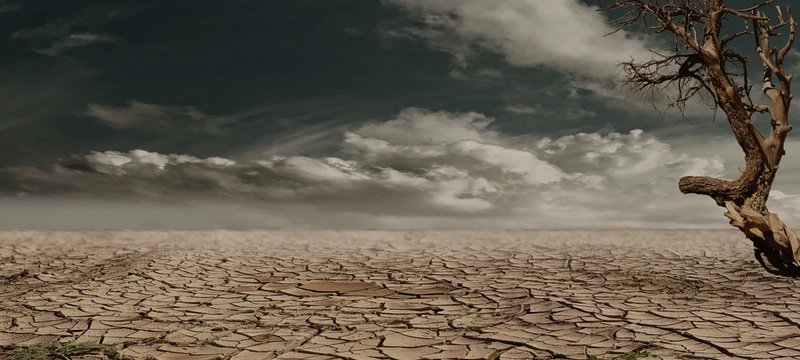The World Day to Combat Desertification and Drought is celebrated today, June 17. This day was proclaimed on January 30, 1995 by the United Nations General Assembly. Its purpose is to highlight ways to prevent desertification and recover from drought. Each annual celebration has a different theme, and this year theme is “Land Belongs to the Future – Let’s Climate Proof It”.
Here are some facts about desertification and drought that you should know.
1.
Desertification is the persistent degradation of drylands ecosystems by variations in climate and human activities.
2.
Desertification is largely caused by unsustainable use of scarce resources.
3.
Desertification affects about 8.9 billion acres (3.6 billion hectares) or 70 percent of all drylands across the Earth. It is nearly one-fourth of the total land area on Earth.
4.
Over one billion people worldwide are affected by drought and desertification, about one sixth of the world’s population.
5.
All over the world, desertification affects the livelihoods of millions of people who rely on the benefits that drylands ecosystems can provide.
6.
Some 10 to 20% of drylands are already degraded, and ongoing desertification threatens the world’s poorest populations and the prospects of poverty reduction.
7.
Desertification is one of the greatest environmental challenges today and a major barrier to meeting basic human needs in drylands.
8.
Desertification diminishes biological diversity, a diversity which contributes to many of the services provided to humans by drylands ecosystems.
9.
Desertification contributes to global climate change by releasing to the atmosphere carbon stored in drylands vegetation and soils.
10.
Desertification has environmental impacts that go beyond the areas directly affected. For example, loss of vegetation can increase the formation of large dust clouds that can cause health problems in more densely populated areas, thousands of kilometers away.
11.
Desertification is caused by a combination of social, political, economic, and natural factors which vary from region to region.
12.
Poverty and unsustainable land use practices will continue to be the main factors driving desertification in the near future, and climate change will also play a role.
13.
Freshwater scarcity, which already affects 1-2 billion people globally, is expected to increase, causing greater stresses in drylands and ultimately a worsening of desertification.
14.
Desertification causes widespread poverty, and is responsible for of the migration in the developing world.
15.
Each year, the planet loses 24 billion tons of topsoil. Over the last two decades, enough has been lost to cover the entire cropland of the United States.
16.
Asia contains the largest amount of land affected by desertification of any continent, almost 1,400 million hectares.
17.
Desertification costs the world more than $40 billion a year in lost productivity.
18.
Drought is an extended period of unusual dry weather that persists long enough to cause environmental or economic problems, such as crop damage and water supply shortages.
19.
The primary cause of drought is abnormally low rainfall.
20.
As the climate heats up, droughts are expected to become more frequent and severe in some locations.
21.
Meteorologists predict drought based on precipitation patterns, stream flow, and moisture of soil over long periods of time.
22.
Drought often creates a lack of clean water for drinking, public sanitation and personal hygiene, which can lead to a wide range of life-threatening diseases.
23.
The low moisture and precipitation that often characterize droughts, can create hazardous conditions in forests, setting the stage for wildfires that may cause injuries or deaths as well as extensive damage to property and already shrinking food supplies.
24.
Droughts are a common feature of climate in California, Colorado, Georgia, and New York, as well as in Brazil, Southeast Asia, Southern Africa, and Australia.
25.
Between July 2011 and mid-2012, a severe drought affected the entire East Africa region, considered the worst in 60 years, and it caused a severe food crisis across Somalia, Djibouti, Ethiopia and Kenya that threatened the livelihood of 9.5 million people. It caused about 50,000 to 260,000 deaths.
26.
The Millenium drought, also known as 2000s drought, in Australia, began in 1995 and continued until late 2009, with the official end of the drought declared in 2012. This drought led to a water supply crisis across much of the country. As a result many desalination plants were built for the first time.
